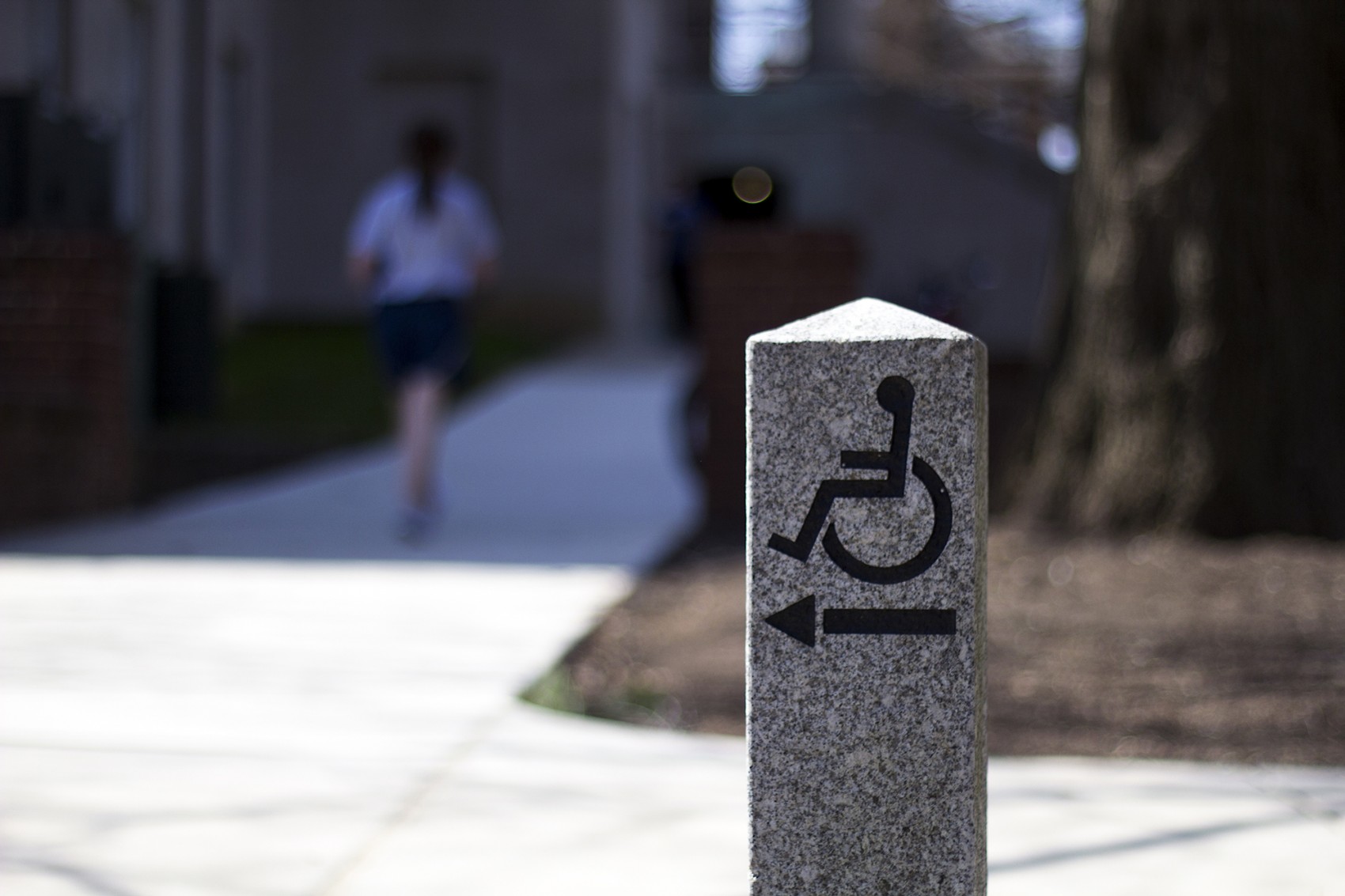When University of Maryland sociology doctoral student Mollie Greenberg visits a campus building for the first time, she sometimes has to circle it in her car several times before she finds a handicap-accessible entrance.
“Any type of signage, while it’s usually there, is very small and pretty hidden,” said Greenberg, who uses an electric scooter.
In the fall, Facilities Management removed some of the granite pillars around the campus that marked handicap-accessible entrances. Months later, the pillars have not been replaced, and university activists say they want more signs around the campus that point out accessible pathways and entrances for those who rely on mobility devices.
[Read more: UMD Facilities Management is removing pillars marking handicap-accessible entrances]
The President’s Commission on Disability Issues, which advises the administration on problems facing students with disabilities, was not warned prior to the pillars’ removal, said commission co-chair Ana Palla-Kane.
University spokesperson Jessica Jennings declined to comment on this matter.
Jennings wrote in an email that many of the pillars were damaged or moved during snow removal and lawn maintenance. In some cases, the pillars were outdated and did not direct people to newly-added accessible entrances, said Jack Baker, executive director of Facilities Management operations and maintenance, in October.
After the pillars were removed, the commission sent a letter to Chief Diversity Officer Roger Worthington urging Facilities Management to make it easier for students with disabilities to navigate the campus, she added.
[Read more: As UMD marks Disability Awareness Month, advocates say city and campus could do more]
Worthington wrote in an email that after receiving the letter, he shared his concerns with colleagues in the president’s cabinet.
Jennings said Facilities Management will roll out a plan to improve signage at accessible entrances this summer, adding that the department plans to assign a “more senior-level person” to sit on the commission to “make sure communication remains open.”
Still, graduate student D’Arcee Neal said the pillars should not have been removed without being immediately replaced.
“I was a new student last fall, and I had zero clue about how to get to any of the buildings,” said Neal, who uses a wheelchair. “The only reason I know where to go now is from personal experience.”
Joseph Williams, a program assistant in the Office of Diversity and Inclusion, said the lack of signage is the “biggest issue” for physically disabled students on the campus. Williams, who uses a wheelchair, said it’s time-consuming to seek out accessible ways to navigate the campus safely.
As this university debates “the best way to maintain and enhance the accuracy of signage,” Jennings said she encourages those with mobility difficulties to use the online campus map, which allows users to select campus destinations and displays accessible pathways between locations.
But Williams said not everyone who relies on a mobility device can use their phones to navigate the campus, as some individuals who use such devices do not have full mobility of their hands.
“Signage is more equitable in that sense,” he said.
Neal added that the online map can be a hassle to use when in a hurry to get somewhere.
“I had an interview and I was running around,” he said. “I didn’t have time to be trying to trace where I need to go because the campus is not laid out in a way that makes it easy.”
Greenberg, who researches the stigma attached to people with physical disabilities for her doctoral work, said signage issues often develop because “there isn’t a lot of thought given to people with disabilities.”
“It’s not a malicious thing where people who are able-bodied think that people with disabilities don’t matter,” she said. “It’s more like, ‘If I don’t experience it, I don’t think about it.'”



